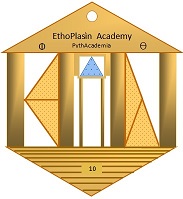

EthoPlasìn & PythagorArium Ways and Symbols
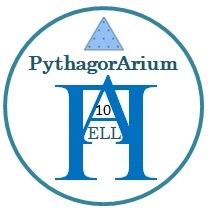
As mentioned above, EthoPlasìn has nothing to do with religion, politics or charity, nor with marketing of any kind. As for politics, it pushes for the advent of EthoCracy, but this is only a long-term objective. EthoPlasìn has more to do, an essentially to do, in relation to the current situation, with creating and expressing Beauty and Goodness for the benefit and enjoyment of all beings and environments, civic environments in particular.
EthoPlasìn
is like producing artistic beauty.
Kallos Beauty!
Mainly Human Beauty, but
all-comprehensive Beauty!
Holistic Beauty! Beauty is the ultimate means, and clearly the main effect of proper
EthoPlasìn Lifestyle and
discipline. It is consequently a tool as much as it is an objective. The Academy will always pursue Beauty in all places, in all
forms, and in all circumstances, not just in physical or civic life. Members
should be good examples of this Kallos Beauty, in their bodies, minds and
behavior. As explained further in our separate page on
Kallos Beauty, physical
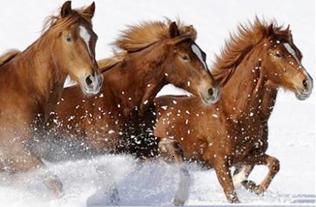 beauty, with or without an erotic component, is only a
minor part of Kallos Beauty. Kallos Beauty is first and foremost an
expression of joy and harmony that invites and inspires others in producing
more beauty of their own, in their own lives, and thus in the environment
they live in. It is the beauty of everything members do, or the environments
they modify or create with their discipline, skills and culture of joy, neatness and
civic elegance. In addition to their bodies kept in their ideal
state, it is the beauty of their minds, values, ideas, ideals and behavior; It is
their whole lifestyle and the specific
Blue Sapphire
CoPHLE
Energy they express at all times in their aura and in all they think and do. It is the
kind of beauty produced by the harmonious development of the "Human
Tetractys", as explained in our page on the
Pythagorean Man Emulation.
beauty, with or without an erotic component, is only a
minor part of Kallos Beauty. Kallos Beauty is first and foremost an
expression of joy and harmony that invites and inspires others in producing
more beauty of their own, in their own lives, and thus in the environment
they live in. It is the beauty of everything members do, or the environments
they modify or create with their discipline, skills and culture of joy, neatness and
civic elegance. In addition to their bodies kept in their ideal
state, it is the beauty of their minds, values, ideas, ideals and behavior; It is
their whole lifestyle and the specific
Blue Sapphire
CoPHLE
Energy they express at all times in their aura and in all they think and do. It is the
kind of beauty produced by the harmonious development of the "Human
Tetractys", as explained in our page on the
Pythagorean Man Emulation.
EthoPlasìn is
like cultivating flowers.
Beautiful flowers! Human Flowers! All human beings love flowers and want to cherish them in
their environment. Nobody has ever fought or made war to flowers. Flowers attract,
fascinate, decorate, reunite lovers in difficulty, harmonize environments,
spread beautifully relaxing smells and inspire only 'Good and Love' to
whoever comes in contact with them. EthoPlasìn experts have rediscovered in Ancient-Greece the
old seeds of beautiful flower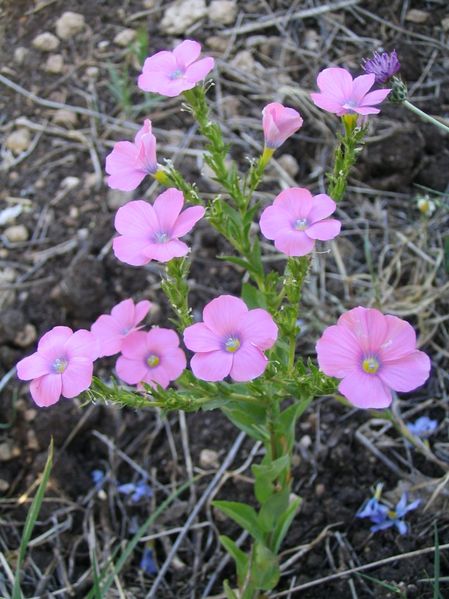 s thought to be extinct, reinvigorated them, crossed
them
with more modern ones and developed a new and unique breed of
Kallos Beauty, that is as
inspiring, in harmony and goodness, to whoever looks at them, as the ancient
sculptures of the classical period. Once cared for and developed, these 'human flowers' can be
transplanted and made grown nearly anywhere, even in ugly environments, and help
increase the beauty and harmony of all these locations. From the places where
they will be transplanted, their pollen will smoothly spread on the wings of a wind of love, along with their
fascinating scent and
beauty, to bigger and bigger areas of these environments, and invite more and more
people coming in contact with them to also get and transplant some of them in their own
new locations around the
world. This is the
EthoPlasìn
Way.
s thought to be extinct, reinvigorated them, crossed
them
with more modern ones and developed a new and unique breed of
Kallos Beauty, that is as
inspiring, in harmony and goodness, to whoever looks at them, as the ancient
sculptures of the classical period. Once cared for and developed, these 'human flowers' can be
transplanted and made grown nearly anywhere, even in ugly environments, and help
increase the beauty and harmony of all these locations. From the places where
they will be transplanted, their pollen will smoothly spread on the wings of a wind of love, along with their
fascinating scent and
beauty, to bigger and bigger areas of these environments, and invite more and more
people coming in contact with them to also get and transplant some of them in their own
new locations around the
world. This is the
EthoPlasìn
Way.
The Linen flowers appearing above to the right, like many other kinds of flowers, are cultivated in the BiosArium. They have been a symbol of 'Divine Mind and Heart Pureness' since early Antiquity and they have the same meaning at the Academy. Their precious seeds are collected, cold-pressed and turned into vegetable linen oil (better known as flaxseed oil). Both the seeds and the oil are used as a nutritional supplement and for various other purposes at the Arium. They are also sold in the stores of the Academy.
EthoPlasìn is also like sculpting
statues. Beautiful statues! Human Statues! Sculpting is the only art that takes out something, instead of
adding something. It takes out the useless or imperfect matter. It keeps only
what defines and frees the real and perfect essence of the beautiful work of art that was
imprisoned in the marble
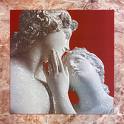
 and the loving mind of its creator. A harmonious
human being is like a statue that has to be lovingly sculptured through appropriate
philosophical discipline. Each statue can be beautifully different from the
previous ones, independently from its position or dimensions, as long as it
is pure essence and meticulously polished.
This is the spirit with which the statues of Ancient-Greece were built and
the reason for their incredible number and popularity. These statues had a
Kallos Beauty and a symbolic life of their own that we can still sense
intensely today, 2500 years later, when looking at them, as representing the
harmony and ideals that
philosophy wanted to impart in all human beings through appropriate
formation. This kind of 'sculpting formation' is what the schools of philosophy of Ancient-Greece used to do with their disciples:
take out the defective and useless traits of the soul of a youth and keep only the
beautiful ones.
This is what the Academy wants to emulate. This is the
EthoPlasìn
Spirit.
and the loving mind of its creator. A harmonious
human being is like a statue that has to be lovingly sculptured through appropriate
philosophical discipline. Each statue can be beautifully different from the
previous ones, independently from its position or dimensions, as long as it
is pure essence and meticulously polished.
This is the spirit with which the statues of Ancient-Greece were built and
the reason for their incredible number and popularity. These statues had a
Kallos Beauty and a symbolic life of their own that we can still sense
intensely today, 2500 years later, when looking at them, as representing the
harmony and ideals that
philosophy wanted to impart in all human beings through appropriate
formation. This kind of 'sculpting formation' is what the schools of philosophy of Ancient-Greece used to do with their disciples:
take out the defective and useless traits of the soul of a youth and keep only the
beautiful ones.
This is what the Academy wants to emulate. This is the
EthoPlasìn
Spirit.
EthoPlasìn is like beekeeping and
producing honey, or Goodness. Beautiful goodness!
Human Goodness! Honey bees are a symbol of
the Academy from the animal kingdom, with all its students studying in a
honeycomb-like hexagonal building called an
ARIUM. Honey bees fly but never
high like planes, where they would be out of touch with reality and in
constant danger to crash. They do not either fly like birds of prey waiting
for
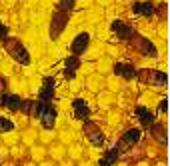 occasions to kill to get
and produce some of their vital energy. Bees fly like bees,
always close to the reality of the land, but always above its dirt, getting
their vital energy only from the most beautiful parts of the places they
visit. Contrary to most other animals, they do not kill or use violence for
their living, rather the opposite. They only help the fecundation of nature
by transporting CoPHLE energized procreative pollen from one place to
another. They produce a final product, the honey, that has been the envy of
all other living beings from as early as when man first set foot on earth,
let alone probably even the envy of the 'gods' themselves living in the
ancient world. Those who fly like bees can see things in high perspective but
still in close touch with the reality of the land. They are not bothered
with holes on rocky roads. They are not afraid of any terrestrial predator
but know how to defend themselves using 'picky'
Etho-Play, physical or
psychological, if and when necessary,
in order to distance and neutralize the attacks of violent beings. They jump
easily over obstacles. They hide easily in secure hives when storms come up.
Bees get their vital energy only from the elevated parts of the land and their
force of action from the higher blue sky they move in, that is from a more ethereal
or 'philosophical' realm of energy than most other
occasions to kill to get
and produce some of their vital energy. Bees fly like bees,
always close to the reality of the land, but always above its dirt, getting
their vital energy only from the most beautiful parts of the places they
visit. Contrary to most other animals, they do not kill or use violence for
their living, rather the opposite. They only help the fecundation of nature
by transporting CoPHLE energized procreative pollen from one place to
another. They produce a final product, the honey, that has been the envy of
all other living beings from as early as when man first set foot on earth,
let alone probably even the envy of the 'gods' themselves living in the
ancient world. Those who fly like bees can see things in high perspective but
still in close touch with the reality of the land. They are not bothered
with holes on rocky roads. They are not afraid of any terrestrial predator
but know how to defend themselves using 'picky'
Etho-Play, physical or
psychological, if and when necessary,
in order to distance and neutralize the attacks of violent beings. They jump
easily over obstacles. They hide easily in secure hives when storms come up.
Bees get their vital energy only from the elevated parts of the land and their
force of action from the higher blue sky they move in, that is from a more ethereal
or 'philosophical' realm of energy than most other living beings. Blue Sapphire
is like the deep blue sky used by the honey bees, and the special symbol of
the Academy from the mineral kingdom. It is even the color of its uniform
which is also lightly embroidered with thread of a honey-like color. Blue
represents the Civic Environment, as opposed to the usual Green environment.
EthoPlasìn wants to create
Beautiful Blue Civic Environments, with more and more human beings trained
to fly high above the dirt of human passions, and to lead others to do the
same on the basis of their example, their discipline and their
CoPHLE
Science of Being rooted in
Ancient Greek Philosophy. This is the
EthoPlasìn
Objective.
living beings. Blue Sapphire
is like the deep blue sky used by the honey bees, and the special symbol of
the Academy from the mineral kingdom. It is even the color of its uniform
which is also lightly embroidered with thread of a honey-like color. Blue
represents the Civic Environment, as opposed to the usual Green environment.
EthoPlasìn wants to create
Beautiful Blue Civic Environments, with more and more human beings trained
to fly high above the dirt of human passions, and to lead others to do the
same on the basis of their example, their discipline and their
CoPHLE
Science of Being rooted in
Ancient Greek Philosophy. This is the
EthoPlasìn
Objective.
EthoPlasìn is like a hive. The honey bee is one of its symbols. The main ARIUM buildings of the Campus have an hexagonal honey comb shape. The Academy provides a holistic formation that shall make its graduates like new swarms of honeybees leaving the hive every year to go and establish in new environments and be the delight of their co-citizens enjoying the sweet 'honey' of their formation and Kallos Beauty.
__________________________________________________
Kingdom Symbols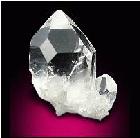
Mineral Kingdom -
Transparent pure rock Crystal is the main
EthoPlasìn
symbol from the Mineral Kingdom. It can be most easily and most positively
CoPHLE energized
with the best intentions of their owners to be reflected on all the other
living beings they meet. It is thus used and worn in various ways by all members on a
daily basis, including a chip of it integrated to their ID cards while being
at the Academy. Deep
Blue Sapphire is the symbol from the
Mineral Kingdom for special occasions and purposes like the
EthoPlasìn University graduation gift. Crystals are pure concentrated
light force with incredible powers. Crystals, more than any other
type of mineral, have
 a
life of their own, a real life: they grow, in a limited way compared to
plants or animals, but nevertheless in a very similar way; Their growth is
usually in beautiful hexagonal structures, similar to snow or frost flakes
but also to the growth of our own human energetic field; They are also
'intelligent' in choosing occasionally, or even temporarily, a cubical or
octagonal shape to better survive and express their beauty; They even have a
sex: some are males, others are females and others still are bisexual; Most
importantly, they are alive and with a form of consciousness in front of
their environment. Crystals are thus eminently able to absorb and carry the
'waves' of members wearing or energizing them with positive
CoPHLE
energy. This is why Rock Crystal is the main
Et
a
life of their own, a real life: they grow, in a limited way compared to
plants or animals, but nevertheless in a very similar way; Their growth is
usually in beautiful hexagonal structures, similar to snow or frost flakes
but also to the growth of our own human energetic field; They are also
'intelligent' in choosing occasionally, or even temporarily, a cubical or
octagonal shape to better survive and express their beauty; They even have a
sex: some are males, others are females and others still are bisexual; Most
importantly, they are alive and with a form of consciousness in front of
their environment. Crystals are thus eminently able to absorb and carry the
'waves' of members wearing or energizing them with positive
CoPHLE
energy. This is why Rock Crystal is the main
Et hoPlasìn symbol from the
mineral kingdom.
hoPlasìn symbol from the
mineral kingdom.
Vegetal Kingdom -
Blue Lavender
is the main
EthoPlasìn symbol from the Vegetal Kingdom.
It is also the color of its uniform. Lavender is a symbol of purification as
a good deterrent to moths. It has a
 strong but charming fragrance, like the
secure approach of all members, in particular when using
EthoPlay to take care of victims of civic violence. It can spread easily in most environments
and produce a nectar particularly rich in
CoPHLE energy. It is cultivated on
the Campus and the honey bees of the
BiosArium use it for producing an
exquisite honey that serves various purposes in the alimentation provided at
the Campus. The Lantana flowers are used to
decorate the areas of the ARIUM and are sold in vases in its stores. They
love light, live better in full sunlight, and blossom for most of the year,
longer than most other flowers. Lilac is used for the
Graduation Ceremonies as they seem to blossom only at one special and short
yearly occasion precisely at that time. Linen flowers are
used as mentioned above, for their seeds and oil that are also sold in the Academy stores.
strong but charming fragrance, like the
secure approach of all members, in particular when using
EthoPlay to take care of victims of civic violence. It can spread easily in most environments
and produce a nectar particularly rich in
CoPHLE energy. It is cultivated on
the Campus and the honey bees of the
BiosArium use it for producing an
exquisite honey that serves various purposes in the alimentation provided at
the Campus. The Lantana flowers are used to
decorate the areas of the ARIUM and are sold in vases in its stores. They
love light, live better in full sunlight, and blossom for most of the year,
longer than most other flowers. Lilac is used for the
Graduation Ceremonies as they seem to blossom only at one special and short
yearly occasion precisely at that time. Linen flowers are
used as mentioned above, for their seeds and oil that are also sold in the Academy stores.
Animal Kingdom - The
HoneyBee is the first
EthoPlasìn
symbol from the Animal Kin gdom as explained in the above section on the
'Ways and Symbols' of the of the Campus
gdom as explained in the above section on the
'Ways and Symbols' of the of the Campus philosophy. Bees are deeply
respected and their honey is consumed every day with great gratitude. The
Horse is the symbol from the Animal Kingdom
that is used in particular for all
special occasions. Many of them live freely on the Campus and can move
easily to all gardens through underground passageways. They are vegetarian and
extremely 'supportive' animals to all human beings, just like all
EthoPlasìn members are expected to be for society in general. Horse riding is taught and
practiced on the Campus and EthoPlay experts have a special role in caring
for them. They are also used in various occasions, like the show following
the annual Graduation Ceremony. Swans are also grown on the
campus. As they are v
philosophy. Bees are deeply
respected and their honey is consumed every day with great gratitude. The
Horse is the symbol from the Animal Kingdom
that is used in particular for all
special occasions. Many of them live freely on the Campus and can move
easily to all gardens through underground passageways. They are vegetarian and
extremely 'supportive' animals to all human beings, just like all
EthoPlasìn members are expected to be for society in general. Horse riding is taught and
practiced on the Campus and EthoPlay experts have a special role in caring
for them. They are also used in various occasions, like the show following
the annual Graduation Ceremony. Swans are also grown on the
campus. As they are v egetarian, particularly neat and elegant in their
behavior, and usually mate for life, they are a good symbol of
EthoPlasìn
lifestyle, discipline and stable Love. As mentioned in our home page, swans
were also an important symbol of Delphi because God Apollo, symbol of
Kallos Beauty and harmony, was brought
in on a chariot carried by swans
at his yearly visits, each spring, to the Delphic sanctuary. Orpheus,
the ELLENIC ("Greek")
historical founder of the ELL
line of culture from before Homer up to Pythagoras
and Plato, was the son of Apollo
representing the divine and perfect
Truth. After his death
and his being destined to live again in the physical world, the mythology
says that he chose rather to return in the body of a harmonious white
Swan, which signifies that the spiritual
Truths that he
promulgated will continue to exist and will be taught via the
ELLlightened
Initiates of the Mysteries. As such, the Swan
is a symbol of the divine power that generated our harmonious world. Squirrels
are also a good symbol of the
EthoPlasìn Lifestyle and they grow and live
freely on the campus. They are pure vegetarian but with a couple of nice
perks. In as much as they may build a reserve of food for the winter, they
in the end will not only consume solely what they need, but also make sure
that what is not needed is placed in such a way underground that it will be
in a position to germinate a new plant or tree of that same food. They in
addition are vegetarian only with plants that will not be killed by eating
them, like it would be the case if they ate carrots, onions or potatoes. No
plant dies from their being vegetarian, rather the opposite, as squirrels seed
new plants of the same kind as the ones they eat as part of their routine
life. From this point of view they are a perfect example of an ideal type of
vegetarian regime.
egetarian, particularly neat and elegant in their
behavior, and usually mate for life, they are a good symbol of
EthoPlasìn
lifestyle, discipline and stable Love. As mentioned in our home page, swans
were also an important symbol of Delphi because God Apollo, symbol of
Kallos Beauty and harmony, was brought
in on a chariot carried by swans
at his yearly visits, each spring, to the Delphic sanctuary. Orpheus,
the ELLENIC ("Greek")
historical founder of the ELL
line of culture from before Homer up to Pythagoras
and Plato, was the son of Apollo
representing the divine and perfect
Truth. After his death
and his being destined to live again in the physical world, the mythology
says that he chose rather to return in the body of a harmonious white
Swan, which signifies that the spiritual
Truths that he
promulgated will continue to exist and will be taught via the
ELLlightened
Initiates of the Mysteries. As such, the Swan
is a symbol of the divine power that generated our harmonious world. Squirrels
are also a good symbol of the
EthoPlasìn Lifestyle and they grow and live
freely on the campus. They are pure vegetarian but with a couple of nice
perks. In as much as they may build a reserve of food for the winter, they
in the end will not only consume solely what they need, but also make sure
that what is not needed is placed in such a way underground that it will be
in a position to germinate a new plant or tree of that same food. They in
addition are vegetarian only with plants that will not be killed by eating
them, like it would be the case if they ate carrots, onions or potatoes. No
plant dies from their being vegetarian, rather the opposite, as squirrels seed
new plants of the same kind as the ones they eat as part of their routine
life. From this point of view they are a perfect example of an ideal type of
vegetarian regime.

__________________________________________________
The Oneness Boomerang Law and Symbol
In a Onenes s world, all our thoughts and actions are like
boomerangs. With what we feel, think and do, we
s world, all our thoughts and actions are like
boomerangs. With what we feel, think and do, we
 gradually build the tissue of boomerangs
of our own lives. With each action and thought
we launch a boomerang of
CoPHLE energy that sooner or later returns to
impact us with the same force we imparted its launching. This network of
boomerangs enforces the law that all we do to others we do to ourselves,
and all we do to ourselves we do to others. This includes eminently the
'Good' we think and do in using our freewill and
Power of Co-Creation.
It is consequently important to master and control this power through an
appropriate philosophy and discipline. This is a field where
EthoPlasìn
intends to make an important contribution through the
Science Of
Being of its Academy.
gradually build the tissue of boomerangs
of our own lives. With each action and thought
we launch a boomerang of
CoPHLE energy that sooner or later returns to
impact us with the same force we imparted its launching. This network of
boomerangs enforces the law that all we do to others we do to ourselves,
and all we do to ourselves we do to others. This includes eminently the
'Good' we think and do in using our freewill and
Power of Co-Creation.
It is consequently important to master and control this power through an
appropriate philosophy and discipline. This is a field where
EthoPlasìn
intends to make an important contribution through the
Science Of
Being of its Academy.
The Boomerang is thus also an action symbol of the Academy. It represents the dynamic CoPHLE energy that permeates the ether where the overall visible and invisible cosmic worlds live, including the beautiful Boomerang Nebula shown to the right, and suffuses our lives with the consequences of all the thoughts and actions we have so far created and launched into the universe.
___________________________________________
EthoPlasìn LOGOS:
graphically shown as here belo
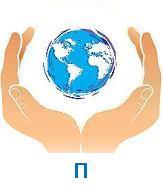
This Vocation Involves the Pythagorean Formation to Enhancement of All Heart and Mind Radiations for the Benefit of All Living Beings, through the
As commanded by the BeLovArium/EthoPlasin
rules of the
EthoPlasìn
Academy, express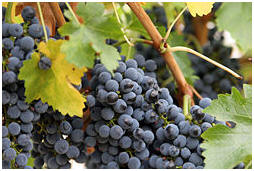 all your aspirations and visualizations
essentially in terms of gratitude to the
CoPHLE energy to which you participate,
in its infinite creative possibilities
all your aspirations and visualizations
essentially in terms of gratitude to the
CoPHLE energy to which you participate,
in its infinite creative possibilities , in a state of holographic oneness
responsibility at Planet Earth level! The power of Imagination is all that
stands between your dreams and the miracles of your reality, in particular your
current civic environment. Visualize and feel the reality and the beauty of these
dreams with
Belief and
Love in order to fill your quantum
ARIUM with their present completion. Look at adversity
only as an occasion for new and better creativity. Be seen and felt
by
the rest of the world as the best examples of Kallos Beauty, compassion, love
and undisturbed bliss, let alone best civic behavior. As you will spread like
swarms of bees leaving the hive, or run like free horses on a beautiful sea
beach, the Universe will then use
your nonlocal resonance to create similar vibrations exponentially for improving
the reality of the rest of all Earth’s living beings. In particular it shall
fill our global society with "More Merit, Better Decorum & Oneness
Responsibility".
, in a state of holographic oneness
responsibility at Planet Earth level! The power of Imagination is all that
stands between your dreams and the miracles of your reality, in particular your
current civic environment. Visualize and feel the reality and the beauty of these
dreams with
Belief and
Love in order to fill your quantum
ARIUM with their present completion. Look at adversity
only as an occasion for new and better creativity. Be seen and felt
by
the rest of the world as the best examples of Kallos Beauty, compassion, love
and undisturbed bliss, let alone best civic behavior. As you will spread like
swarms of bees leaving the hive, or run like free horses on a beautiful sea
beach, the Universe will then use
your nonlocal resonance to create similar vibrations exponentially for improving
the reality of the rest of all Earth’s living beings. In particular it shall
fill our global society with "More Merit, Better Decorum & Oneness
Responsibility".
Red wine grape appearing above is also cultivated in the
BiosArium of the
Academy. Red wine used moderately is the preferred non-water drink for all
members and the only alcoholic drink allowed to non-hoplite members. It is also an
ancient symbol of Health and a Divine Companion graciously offered by
CoPHLE
Nature to help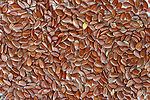 members express Joy as per
Rule One of the
EthoPlasìn
discipline.
members express Joy as per
Rule One of the
EthoPlasìn
discipline.
Linen flax seeds appear to the right, with a gem of Lavender above them.
Graduation Lilac appears at the bottom right.
Color of the uniform blazer: Glaucous (bluish-grey of red wine grapes, or 'waxy sapphire')
Color of the uniform trousers or skirts: Linen (reddish-brown of flax seeds or of grapes stem)
__________________________________________________
EthoPlasìn Emblem Symbols
Apart from the written logo mentioned above, all members must wear proudly a form of EthoPlasìn Insignia, usually called a Label, or a PythaL. It is the gold Member Symbol shown at the top of the page. It can be chosen from 6 different types and they are provided (and withdrawn as appropriate) by the Academy. Wearing at least one, discretely but in a visible way, is required at all times, by all members, in and out of the ARIUM. It can be:
a necklace,
a bracelet,
a ring,
a belt buckle
a clothing emblem or
a lapel pin.
On all these 5 symbols, there must be at least the graphical representation of the "EΠA" logo letters sculptured, engraved, knitted or printed on it, in the shape of the graphical representation shown at the top of this page wherever possible. Where feasible and appropriate, there will also be the extended versions of that logo, as either "EΠAcademia" (the short name of the EthoPlasìn Academy for symbols worn by students ad the Arium), or "EΠAssociation" for symbols worn by external members not studying at the Arium. Where the extended versions of the logo are used, there will also normally be the website address www.EthoPlasin.net discretely appearing somewhere on the symbol. On all official correspondence, there will always be the graphical "EΠAcademia" symbol, as letterhead or a headline, as per the example shown at the bottom of this page, and normally also at least the website address. The full "EthoΠlasìn Academy" logo in its hexagonal shape, as appearing on the home page, will be kept normally for wet or dry seals and the embossing of other official documents like typically the graduation certificates and the awards granted by the Academy.
The Greek "Phi" (Φ) and "Thu" (Θ) at the base of the roof of the Private Academy Symbol -
The Greek "Phi" (Φ), much before it was used as a symbol of Beauty of proportions related to the Golden Number, was, in Greek "Phi"-losophy, a much older symbol of Merit, both in terms of personal and social justice, but a kind of Merit, giving lovingly and justly to everyone a fair lot in life on the basis of their own efforts and talent. It is thus a dually important symbol for the EthoPlasìn Academy that is pursuing objectives of social beauty and fairness through the advent of more MeritoCracy, and hopefully a new type of EthoCracy system of government for our modern world. This is why it appears on the private Academy's symbol (at the top of the page), on the left side of the roof level. The Greek "Thu" (Θ) appearing on the opposite right side of the roof, to balance with the "Phi" on the left, was, and is, a symbol of the beauty of Ethics, or Justice in terms of Ethics, which are at the base of the holistic formation provided by the Academy. Φ means Justice in terms of Merit and Θ means Justice in terms of Ethics.
__________
The Swan, the Demônes and the Dioscures
The beautiful white swan, as shown near the upper left corner of the
Home Page, with its dignity, elegance and neatness,
sy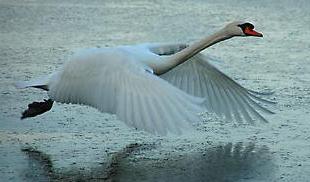 mbolilizes
the type of civic environments the
EthoPlasìn wants to promote through the
exemplary conduct of its members. Many swans live in the
mbolilizes
the type of civic environments the
EthoPlasìn wants to promote through the
exemplary conduct of its members. Many swans live in the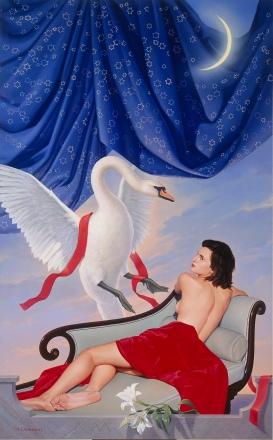 BiosArium of the
EthoPlasìn campus.
Zeus (Jupiter), the top level Greek God of the Olympus,
transformed himself into a beautiful swan before the fecundation of Leda, leading
to the birth of the twins Castor and Pollux, the two handsome "Dioskouroi"
(Sons of God) who
became famous Savior symbols for people in difficulty in the history of the
culture of the
Western World and symbols of Ethics and Justice. Castor was a horse tamer
(representing the taming of human passions) and Pollux was an invincible
wrestler (symbol of fighting civic misbehavior) and they are thus, along with
the swan, good
EthoPlasìn symbols. Castor and Pollux were twins and
their
symbols were made eternal through the naming of the Gemini (Twins) constellation,
the third one of the zodiac, that
includes the two main stars named after them.
BiosArium of the
EthoPlasìn campus.
Zeus (Jupiter), the top level Greek God of the Olympus,
transformed himself into a beautiful swan before the fecundation of Leda, leading
to the birth of the twins Castor and Pollux, the two handsome "Dioskouroi"
(Sons of God) who
became famous Savior symbols for people in difficulty in the history of the
culture of the
Western World and symbols of Ethics and Justice. Castor was a horse tamer
(representing the taming of human passions) and Pollux was an invincible
wrestler (symbol of fighting civic misbehavior) and they are thus, along with
the swan, good
EthoPlasìn symbols. Castor and Pollux were twins and
their
symbols were made eternal through the naming of the Gemini (Twins) constellation,
the third one of the zodiac, that
includes the two main stars named after them.
The take-off picture of the above swan to the left, symbolizes the power of the new EthoPlasìn movement if only allowed to fly freely. The swan is one of the biggest birds to fly and thus very powerful and energetic in all its actions and endeavors, let alone flying assuredly to its target destinations.
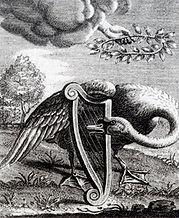
A swan never kills, as it is vegetarian, and usually has a very stable love relationship, as it normally mates for life. When courting, as shown at the top of our page on Rule 3 and EthoPlasìn Love Life, the necks of the two birds, when sitting closely in front of each other, form the shape of a beautiful heart, symbol of the love and the stability that should exist in the relationship of a couple in love, intending to raise the best of descendants for the best harmony of all civic environments.
The swan has the reputation of being mostly mute during his life, or 'civically' very quiet, but to sing a beautiful 'song' just before his death. Philosopher Socrates speaks about this symbol just before his own death. The so-called 'Swan Song' is the symbol of an ending life, or a 'death', that should not be feared, but rather seen as a serene passage to another more beautiful life in a new dimension, when it comes as the 'last and most fulfilling achievement' of those who have conducted the best possible virtuous life on the basis of their own capacity, like the fully trained EthoPlasìn members. This legend of the Swan Song was painted beautifully by Reinier Van Persijn, in 1655, in the picture to the left.
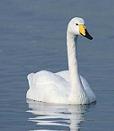 As
said in our opening page, the
SWAN, with its
elegant
modes, as shown to
the l
As
said in our opening page, the
SWAN, with its
elegant
modes, as shown to
the l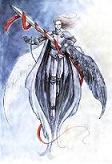 eft, with its neatness and dignity, not to mention
its unique strength in flying assuredly to its target destinations, symbolizes
the main EthoPlasìn objective of promoting and achieving best Civic Decorum and
Meritocratic Wellness. Zeus (Jupiter), the top level Greek God, transformed
himself into a beautiful swan before the fecundation of Leda (see the above
painting of Droungas with the red ribbon), leading to the birth of the
twins Castor and Pollux, the two handsome Dioscures (Διόσκουροι
/ Dióskouroi,
as "Sons of God") who became Savior symbols for people or society in difficulty and symbols
of Ethics and Justice in the history of the culture of the Western World.
eft, with its neatness and dignity, not to mention
its unique strength in flying assuredly to its target destinations, symbolizes
the main EthoPlasìn objective of promoting and achieving best Civic Decorum and
Meritocratic Wellness. Zeus (Jupiter), the top level Greek God, transformed
himself into a beautiful swan before the fecundation of Leda (see the above
painting of Droungas with the red ribbon), leading to the birth of the
twins Castor and Pollux, the two handsome Dioscures (Διόσκουροι
/ Dióskouroi,
as "Sons of God") who became Savior symbols for people or society in difficulty and symbols
of Ethics and Justice in the history of the culture of the Western World.
From the point of view of our Mission
Statement, a fully trained
EthoPlasìn member becomes a
DEMÔNE
(someone pursuing DEcorum,
Merit
and ONEness), as expressed
symbolically by the proud knight figure to the right. But we are talking about a DEMÔNE
in the good philosophical sense of the Ancient-Greek word (δαίμων, dáimōn or
dæmôn), and not in
the bad religious sense of the modern word 'demon'. It means someone with a superior type of
knowledge,
discipline, skills and conduct, who can therefore play the role of a
benevolent mediator between the Human and the Divine realms, that is between the
world of the Archetypes and the world of our daily Reality, for the benefit of
all living beings and, consequently also
 between the more harmonious and the
less harmonious realms of human life, for the improvement in particular of all civic environments.
Demône has thus the basic sense of a capable and
protective guardian angel and mediator. Their best symbolic representations and
idols are the Dioscures (Dioskouroi, Sons of God) Castor and
Pollux, born of the relation
between God and Leda who, as mentioned above, became symbols of Ethics and
Justice in the history of the western culture. Two Demônes uniting formally to help each
other, through a relation of love or friendship, swearing their mutual assistance in their
EthoPlasìn discipline formation
and in their efforts to improve civic environments, form a pair of Dioscures.
The Dioscures are then united like solar systems, with planets and satellites,
between the more harmonious and the
less harmonious realms of human life, for the improvement in particular of all civic environments.
Demône has thus the basic sense of a capable and
protective guardian angel and mediator. Their best symbolic representations and
idols are the Dioscures (Dioskouroi, Sons of God) Castor and
Pollux, born of the relation
between God and Leda who, as mentioned above, became symbols of Ethics and
Justice in the history of the western culture. Two Demônes uniting formally to help each
other, through a relation of love or friendship, swearing their mutual assistance in their
EthoPlasìn discipline formation
and in their efforts to improve civic environments, form a pair of Dioscures.
The Dioscures are then united like solar systems, with planets and satellites,
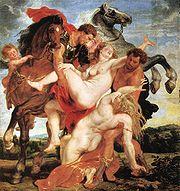 all collaborating harmoniously to maintain and improve the environment of all
living beings, human civic environments in particular.
all collaborating harmoniously to maintain and improve the environment of all
living beings, human civic environments in particular.
The great contemporary Greek painter Achilles Droungas well represented the fecundation of Leda by Zeus, after his transformation as a beautiful Swan, leading to the birth of Castor and Pollux as symbols of Ethics (above to the right). Rubens representation of Castor and Pollux in the painting The Abduction of the Daughters of Leucippus to the left. Representation of Castor and Pollux in sculpture to the right from Joseph Nollekens (1767).
The beautiful symbols of Ethics, impersonated by the twins Castor and Pollux as "Sons of God" (Dioskouroi) were immortalized by the naming of the Gemini (Twins) constellation (the third constellation of the zodiac) that includes the two main stars named after them.
The most well known representations of the Dioscures at the moment are the two statues at the top of the staircase leading to the Capitol in Rome. The 'Campidoglio' is the place of the municipal government of the city of Rome (place designed by Michelangelo, of strong Ancient-Greece and Platonic culture). Castor and Pollux, the two Dioscures, thus represent the ideal of best civic life, the guardians of the city for ensuring its best administration in terms of ethics and justice. Fully trained members in the EthoPlasìn Discipline are in the end no less than such handsome Dioscures. In their modern version, these Dioscures are represented by the male Hoplites and the female Amazones of the EthoPlasìn discipline. The Dioscurean Spirit also expresses itself in many other ways, in all aspects of the EthoPlasìn life using "Polite Emulation" in expressing excellence or Kallos Beauty in pairs, typically in the practice of the EthoJudo discipline or in artistic competitions, somewhat in the way Balzac used to call Chopin and Liszt the two Dioscures of the grand piano.
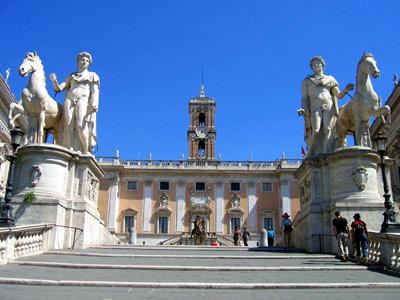
_________________________
'BeLove' Salutation
In BeLov, the
'Be' means 'Belief' in the Kallos Beauty of all aspects of
EthoPlasìn values, discipline and
philosophy, and the validity of the life-style or
Science of Being it expresses
and promotes.
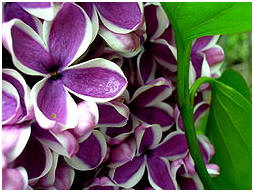 c realm, 'Be' may also be seen to stand
for 'Bee', like the Honey Bee that is the main
EthoPlasìn symbol from the animal kingdom as explained in
the previous section.
c realm, 'Be' may also be seen to stand
for 'Bee', like the Honey Bee that is the main
EthoPlasìn symbol from the animal kingdom as explained in
the previous section.
All members use this standard salutation at the ARIUM or when they
meet while outside the Academy campus: 'BeLove'. It reflects
their best wishes for those they meet to be always a figure of
Belief and
Love. Belief in, and love for, the
EthoPlasìn Philosophy and the
EthoPlasìn Discipline. Love for their role as a force of enlightenment
and Kallos Beauty for all to enjoy and learn from.
BeLove,
when pronounced,
is usually accentuated on “Bê”. It
can also be abbreviated to “Bê” in
most informal and quick occasions, like when quickly passing by a friend PythaS.
BeLove
Jacques
As explained briefly on our home page, the private Member Symbol (the above gold insignia and its mini medallion version at the top of the page), is the one worn at all times, in a visible way, by all members, in at least one of its 6 forms (necklace, bracelet, ring, belt buckle, pin or emblem). The stairway at the bottom represents the 10 steps or grades of the EthoPlasìn Rules of discipline. The little square with an "10" in the middle of the stairway represents the grade of the holder, and is usually a number, from 1 to 10. It can also be "M" for "Master" or "G" for the acting "Grand-Master" at any given time.
The 4 Doric columns of Polykleitonian proportions represent the Pythagorean Tetractys and the 4 basic Cardinal Virtues to be pursued by members. The Tetractys is even better represented by the blue triangle containing the 10 dots, in the upper area of the center part of the logo, supported by the Greek "P". Members themselves are like strong and beautiful columns supporting the construction of World Civic Wellness. In that same Sacred Tetractys, the Greek 'th' letter "Θ", appearing at the roof level to the right, was the symbol of Ethics. The Greek 'P' letter "Π" was the symbol of the noble 'door' to access higher knowledge and virtues, and is associated with the "6P Approach" used by members in facing life issues, as explained in our page Description in more details. The 3 spaces between the Doric columns show an ancient Greek "E" shape on the left side, an ancient Greek "P" shape (Π) as the 'door' of the central area, and an ancient Greek "A" shape to the right, meaning "EPA" (in English), or "EΠA" (in Greek), as the initials of the EthoPlasìn Academy's full name. The official short name of the Pythagorean Academy, as it is known internationally, is: "PythAcademia" in honor of both Pythagoras and Plato (the latter lived 150 years later but he was of clear Pythagorean descent from a philosophical point of view and his school was called Academia). At the top of the central gate of the "Π" of "EPA", there is a Tetractys appearing, in a blue sky color triangle, as the most central and fundamental symbol of the EthoPlasìn Academy, indicating that its associated Pythagorean philosophy and discipline is the only entrance, the only key, and the only right path, to attain full holistic EthoPlasìn formation. The "10" in the middle of the accessing scale, at the bottom, stands for the 10 grades of the EthoPlasìn discipline.
The various geometrical shapes of the symbol all have their symbolic meanings, including the Circle at the top representing the high ideal of (civic) 'Perfection' or Excellence pursued by all members. Its overall shape is a vertical Hexagon (in correspondence to the horizontal hexagon of the public symbol shown on the home page, and like the three main residential buildings on the campus, as shown in an Attachment. These hexagonal residential buildings have one of the "6P Philosophers" represented on each side). The beehive hexagonal shape is a symbol of Strength and Discipline in referring to the EthoPlasìn life style. The two sides of the central Rectangle holding the 4 Doric columns are built on the basis of the proportions of the Golden Number, usually represented today by the Greek letter 'phi' (Φ) of 'Philosophy', appearing at the roof level to the left. In the Sacred Tetractys, the Greek 'phi' (Φ) was a symbol of both Beauty and Justice, which are two of the traits brought into society by the lifestyle of fully trained EthoPlasìn members (as explained in our page on Kallos Beauty).